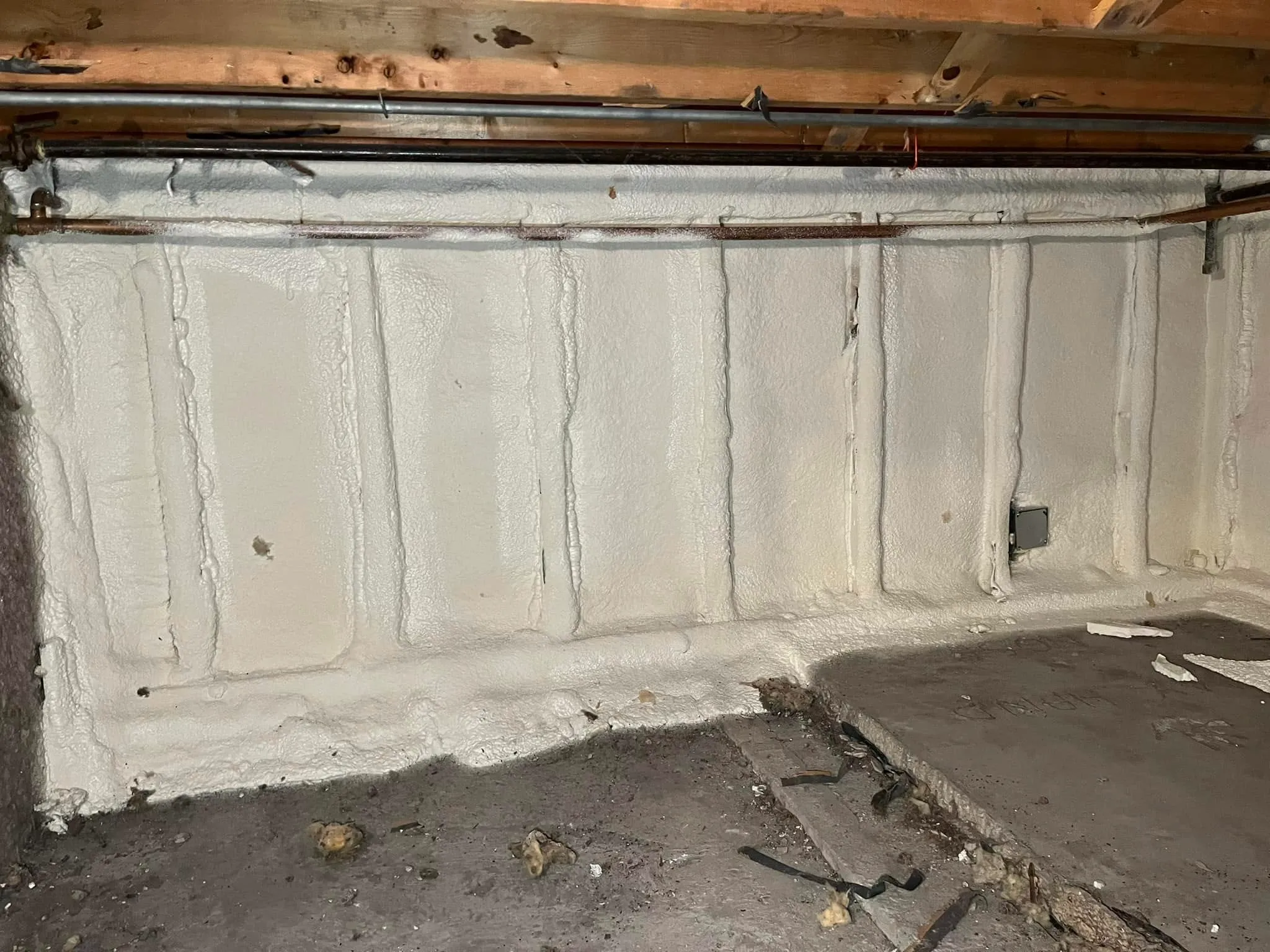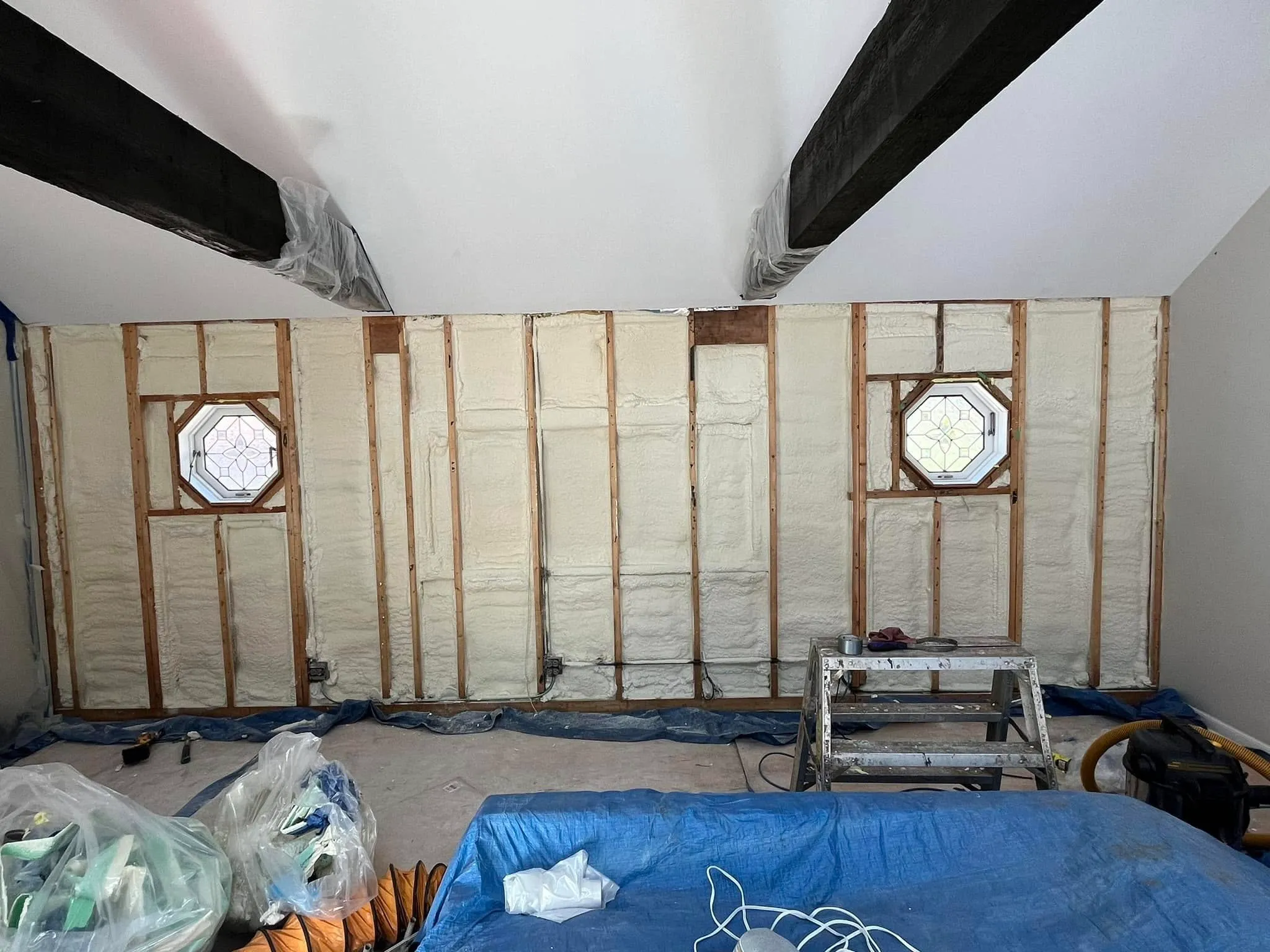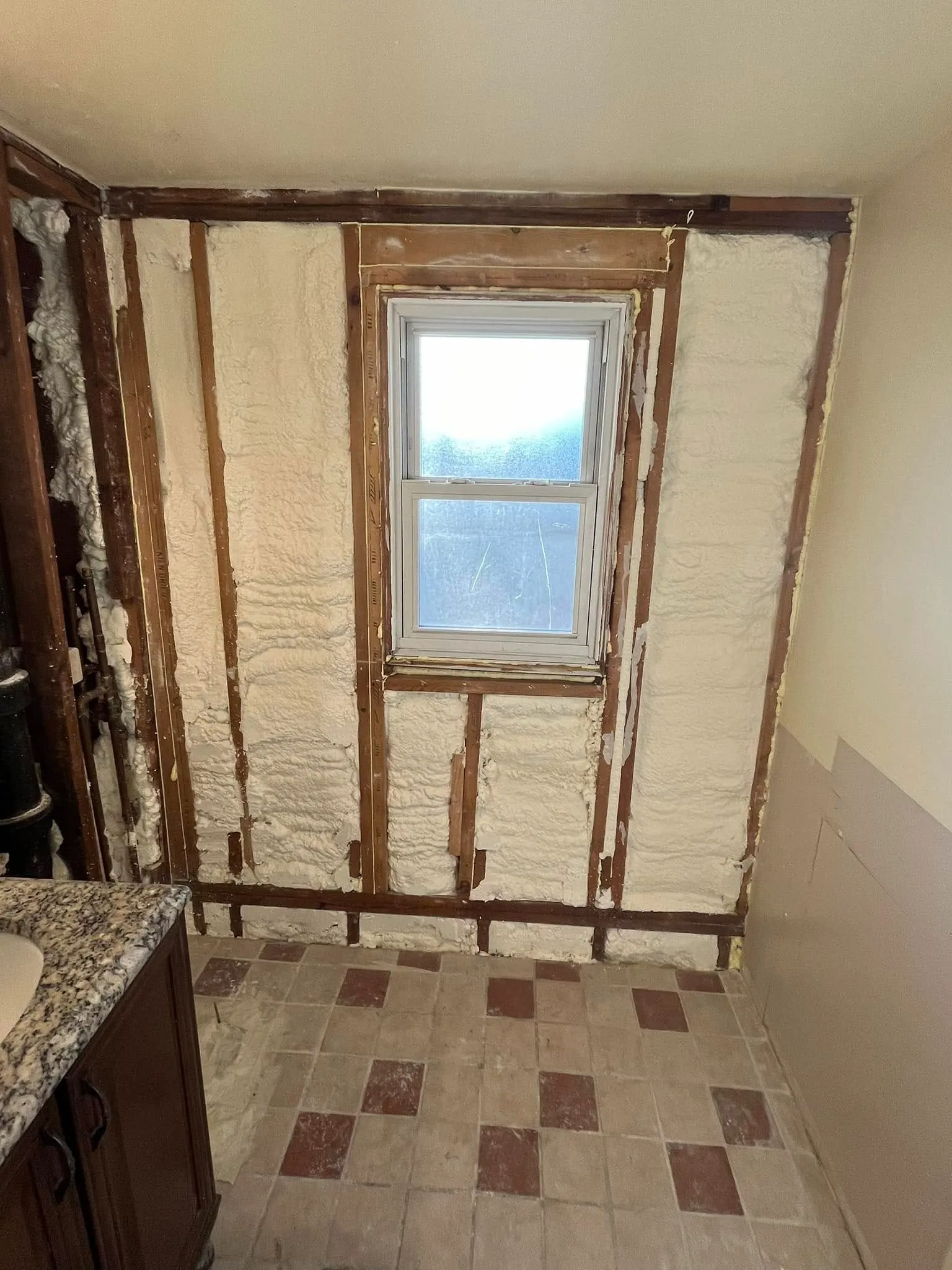
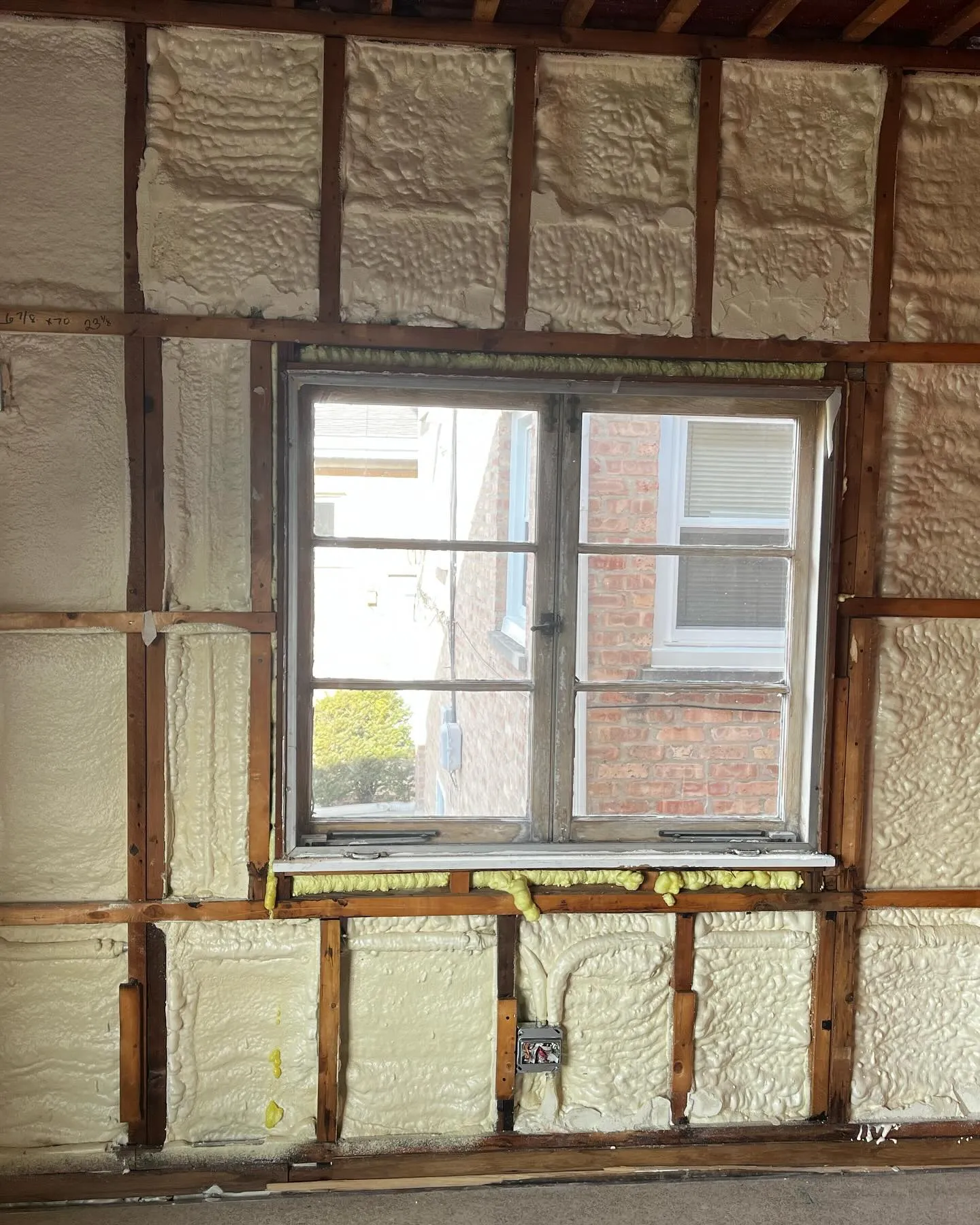
Open-cell spray foam insulation helps prevent ice dams by creating a complete air barrier on the underside of the roof deck. This application stops the warm, moist air inside your home from reaching the cold surface of the roof sheathing. When the sheathing stays cold, the snow on top of the roof doesn’t melt from underneath. Without this melting and refreezing cycle, ice dams cannot form along the eaves. It is a direct solution that addresses the root cause of ice dams: heat loss through the roof.
To understand why this is such an effective solution, this article will explain the mechanics of ice dam formation, how open-cell spray foam works as a preventative measure, and what you need to consider before choosing this method. The information provided is based on extensive field experience managing insulation projects in climates where heavy snow and ice are common challenges.
Ice dams are ridges of ice that form at the edge of a roof and prevent melting snow from draining off. The water that backs up behind the dam can leak into a home and cause damage to walls, ceilings, insulation, and other areas. This problem starts with an uneven roof temperature.
Here’s the typical sequence of events:
Applying open-cell spray foam directly to the underside of the roof sheathing creates what is known as an unvented, or “hot roof,” assembly. This approach stops ice dams by controlling the two factors that cause them: heat transfer and air leakage.
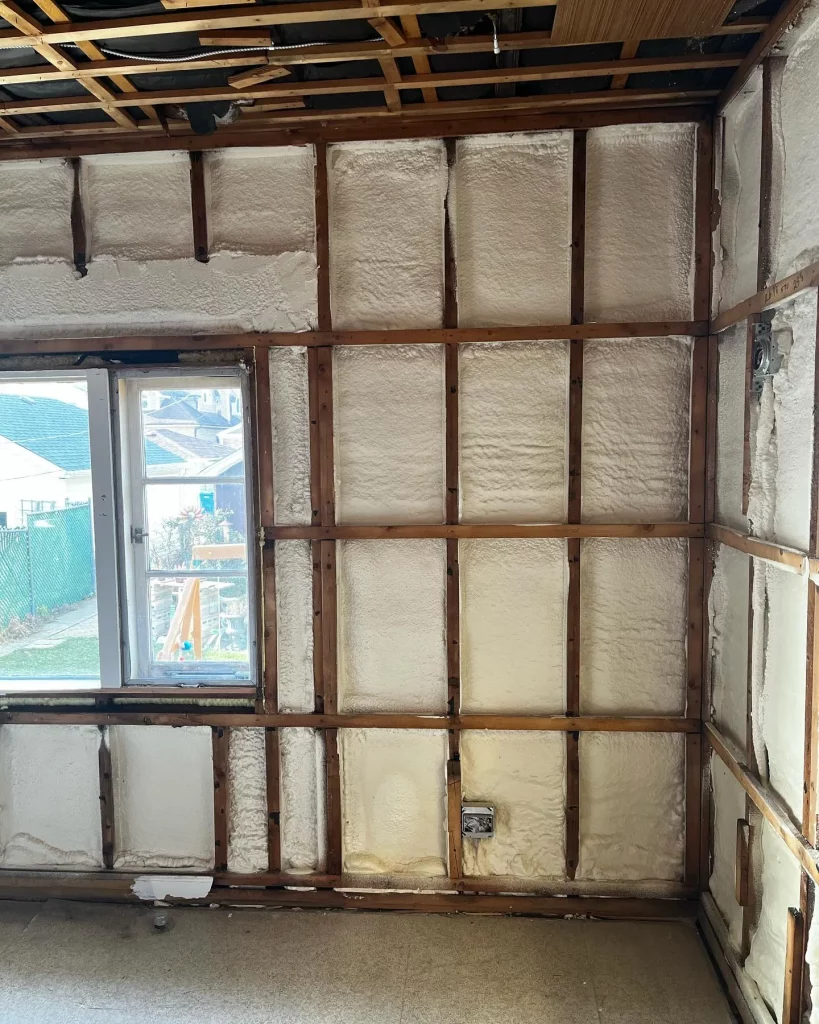
While other insulation types exist, open-cell and closed-cell spray foams are the most common for direct application to a roof deck. Each has distinct properties.
| Feature | Open-Cell Spray Foam | Closed-Cell Spray Foam |
|---|---|---|
| R-Value | Approx. R-3.5 to R-3.8 per inch | Approx. R-6.5 to R-7.0 per inch |
| Air Barrier | Yes, at sufficient thickness | Yes, at sufficient thickness |
| Vapor Permeability | Permeable (allows drying) | Impermeable (acts as a vapor barrier) |
| Expansion | Expands up to 100 times its liquid size | Expands about 30 times its liquid size |
| Structure | Soft, flexible, and spongy | Rigid and dense |
For preventing ice dams, open-cell spray foam is often the preferred choice. Its massive expansion makes it exceptionally good at filling irregular cavities and sealing complex roof geometries. Its vapor permeability is also an advantage, as it allows the roof assembly to breathe and dry out should any moisture find its way in, which helps protect the roof structure over time.
Applying spray foam to your roof deck is an effective but significant upgrade. It fundamentally changes how your attic and roof system perform.
Using open-cell spray foam on the underside of a roof deck offers a permanent solution to ice dams by directly addressing the heat loss and air leakage that cause them. It creates a consistently cold roof surface, allowing snow to melt evenly and drain properly.
Before moving forward, it’s best to evaluate your home’s specific construction, the condition of your roof, and your long-term goals. A professional assessment can help determine if this is the right approach for protecting your home from winter weather damage.
Properly insulating a roof deck to prevent ice dams requires careful planning and expert installation. If you want to know if this solution is right for your property, the team at South Chicago Insulation can provide a thorough evaluation. For a detailed consultation, you can reach out by phone at (779) 803-8025 or send an email to [email protected] to discuss your home’s specific needs.
Yes, but the existing floor insulation should usually be removed. Insulating both the roof deck and the attic floor can trap moisture and create other problems. The goal is to move the building’s thermal boundary from the ceiling plane to the roof plane.
No. In fact, by stopping the flow of warm air from the house, the shingles on a “hot roof” often run slightly cooler in the winter than on a poorly insulated, vented roof where constant heat loss is occurring. This can help extend shingle life.
The spray foam adheres to the wood sheathing. When it is time for a new roof, the roofing contractor will remove the shingles and the sheathing together. New sheathing is installed, and if desired, the underside can be re-foamed.
Spray foam is a combustible plastic and must be protected by a 15-minute thermal barrier, such as half-inch drywall or an equivalent fire-retardant coating, as required by building codes. The Spray Polyurethane Foam Alliance provides detailed information on these safety requirements.

